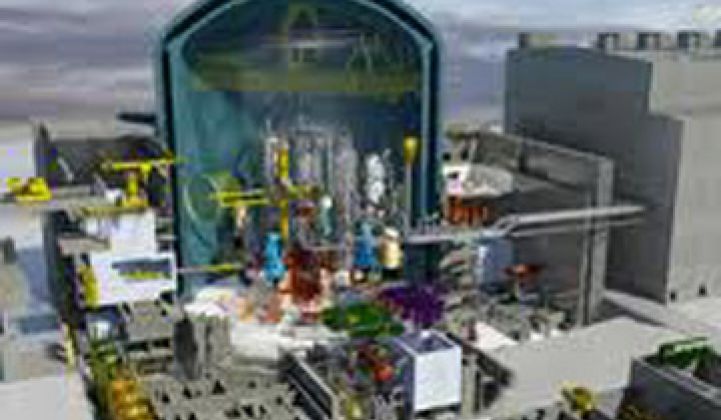The nuclear plant might be one of the most advanced technologies ever invented, but their underlying budgets sound like something straight from the age of the pyramids.
"Sixty percent of the costs of building a plant in the U.S. come from labor," said Lucas Davis, a professor at the Haas School of Business at UC Berkeley during a session at the Commonwealth Club today.
While the nuclear industry says it will intensely scrutinize the failures of Fukushima to prevent future catastrophes, it must also grapple with one of its chronic problems -- namely, cost.
The budget for nuclear plants -- historically speaking -- exceed expectations and completing the plants often takes longer than expected. Davis, in fact, said he couldn't even think of one project that has come in on time and/or under budget. The cause of the overruns comes in part from the sprawling nature of these projects. The years it takes to build plants takes a toll, too: the accumulated interest soars into the hundreds of millions. Industry critics on other occasions have also blamed a military-industrial complex mentality that tends to underestimate the difficulties.
If the nuclear industry could hit its targets, "that would change everything," said Davis. "But for 60 years, the industry has said costs will go down but the empirical evidence is mixed."
The problem is even worse now than in the '60s and '70s because nuclear plants have since become infrequent events. No new commercial reactors have been built in the U.S. for more than three decades.
Areva, the French nuclear giant, wants to complete a reactor in Finland by 2012. The original budget was $3 billion. The final budget will be closer to $5 billion, admitted Jacques Besnainou, CEO of Areva's U.S. group.
"In Europe, we didn't build one for 20 years. We lost the supply chain. We lost the engineers," Besnainou said. "The initial costs were too low."
Besnainou, however, said that the cost issues shouldn't hold up new plants. Cost, he asserted, isn't the central issue anyway. Because nuclear plants can provide power for 40 to 60 years, they are cost-effective over the long term. Existing nuclear reactors, in fact, are cash cows, said Jeff Byron, the former California Energy Commissioner, because utilities have paid off the costs a long time ago.
The problem is getting the money up front to build them. Banks are skittish about backing new plants. As a result, the U.S. government, and other governments, need to step in and finance the first few plants through programs like the existing DOE loan guarantee program. Once Wall Street sees that the nuclear industry can live up to its promises, private money will step in.
"The issue is not cost. It is financing. You have to compare it to the Hoover Dam," Besnainou said. "You wouldn't say we cannot build highways because they are too expensive.
"Foreign oil -- that is expensive," he added.
New strategies could also help cut costs. In China, for instance, a company working with Areva on a plant managed to lay down the cement pad in a single pour. That saved one month of construction time, said Besnainou. Recycling fuel -- something the U.S. does not do but most other nations do -- would also ameliorate many of the problems revolving around the storage of spent fuel. (Besnainou also asserted that the world has around 200 years' worth of uranium reserves and that that number would climb if recycled fuel were added to the mix.)
Extending the life of the existing reactor fleet, he added, is also not a long-term option. The 104 commercial reactors in the U.S. provide 20 percent of the power in the country; the fleet of U.S. plants is the oldest in the world with most of the reactors dating back 40 or so years. Right now, the majority of nuclear reactor owners are seeking permits to extend their operating permits from 40 years, the standard license, to 60 years, but it's a stopgap.
"I don't think the fleet will get extended to 80 years," he said. "Like all of us, they will retire."
Fun fact: One pound of uranium can provide the same amount of energy as 100,000 pounds of coal.
Still, even if the nuclear industry can hit its mark, it may still not be a good option financially. Power from new plants will cost 10 cents a kilowatt hour, said Davis, and that's assuming that the new plants cost $4,000 per kilowatt in capital costs, a figure that comes from a recent MIT report. The DOE estimates that the capital costs my be closer to $7,000 a kilowatt.
New natural gas plants can produce power for 5 cents a kilowatt hour. And natural gas may stay below $5 per million BTUs, a relatively low price, through 2022 thanks to large deposits being unlocked through fracking.



